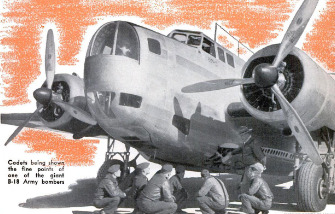-
Title (Dublin Core)
-
Making of an army flyer part II
-
Article Title and/or Image Caption (Dublin Core)
-
Making of an army flyer part II
-
extracted text (Extract Text)
-
CADET RICK JONES LEARNS ABOUT NIGHT FLYING
AND HAS HIS FIRST EXPERIENCE WITH THE “JEEP”
THE night was black and moonless, but
as Flying Cadet Rick Jones sat at the
dual controls of his sleek Army BT-9
monoplane, it looked to him as if he
could reach up and pick a handful of stars
right out of the clear Texas sky.
His preliminary Air Corps training be-
hind him, Rick was now a student at Ran-
dolph Field, the great university at which
the U.S. Army prepares men to man its
modern fighting planes. Tonight he was
trying his hand at guiding his ship safely
through the darkness.
Two thousand feet below, the giant land-
ing field was the size of a pocket handker-
chief. The borders were outlined in green
markers and red obstruction lights, while in
the center of the field a faint patch of light
showed the area swept by the landing flood-
lights.
‘The roar of the motor was sweet and even,
the BT-9 responding to the controls with a
smooth precision. Compared with the light
PT-13 of his early training, it seemed like
driving a fast racing car instead of a truck.
At times he was almost frightened at so
much power under his throttle, but now he
was getting the feel of the ship. Three
nights of dual flying with his instructor had
given him confidence.
“He's giving me a free hand this time,”
he thought, missing the occasional reassur-
ing pressure on the controls—then realized
that only a sandbag ballasted the rear cock-
pit; that his instructor was down below in
the glass-windowed control tower, with the
dispatcher and other instructors whose ca-
dets were soloing tonight. Down there, he
knew, keen Army eyes were watching,
weighing him, testing his value to the na-
tion that was giving him its best here at the
famous “West Point of the Air.”
From time to time, in the distant sky,
tiny red and green lights moved and disap-
peared. Seven other cadets were practicing,
each in his own quarter of the sky—three
with Jones below the 2,000-foot level, four
safely above 2,500.
In his headset a hoarse voice rose above
the static: “Lower Zone 2, come in for a
landing.” Atop one of the hangars flashed
two parallel lines of red lights.
Rick flicked the radiophone to “Send”
position and replied into his microphone:
“Lower Zone 2 to Tower. Received O.K.”
Heading back in a descending spiral
toward the field, he lost altitude; laid his
course parallel to the base of the swiveled
wind T outlined in green lights, and de-
scended to 500 feet as he traversed the ima-
ginary “base leg” of his entrance to the
field.” A square turn headed him straight
into the wind. He cut his gun, lowered his
“air-brake” wing flaps, and settled rapidly
at the correct gliding angle.
Out of the dark rushed the plane, into the
slanting glare of the floodlights’ diagonal
beams. The landing wheels bumped and he
was taxiing rapidly over the field.
“Good landing. Now roll up your wing
flaps and go back to your zone.”
Rick cranked the handle of the flap con-
trols, pushed hard on the throttle, and again
raced into the blackness at sev-
enty miles an hour. As the jolting
stopped and the field dropped
away from his wheels, three red
bars flashed from the hangar top
and the headset said, ‘Lower Zone
3, come in for a landing.”
One after another, the eight ca-
dets went through their paces in
solving night problems, always
under the watchful direction of
the instructors who rode with
them or watched from the control
tower below.
Again Rick landed by the aid
of a 800,000-candle-power para-
chute flare, hurrying to reach the
ground before its unearthly bril-
liance failed. Then came the most
formidable problem of all—“wing-tip” land- |
ings, guided only by the beams from the
lamps sunk into recesses in the leading edge
of the monoplane’s wing. To make the sud-
den drop down into nothingness, down
toward a hypothetical landing field that was
merely a square black hole, was like jump-
ing blindfold from a high springboard. The
red line of marker lights rose and fell on the
horizon as he dipped and raised the nose of
the plane. Then a gray patch as the beams
began to reveal the surface of the field. A |
split seconds anxious suspense, a lightning
judgment of distance—then the bump of the
wheels, a sweep across the field, and off
to try it again.
The next day, a new problem was presented
as four G Flight cadets gathered about a
table in the hangar annex, looking over
the shoulder of the man at the microphone.
Across the wide chart upon the table crept
the “bug,” an instrument vaguely resem-
bling the workings of a phonograph. Upon
its three casters it sidled about like an an-
cient, cautious crab, leaving a narrow ink
track in its wake.
From the bug a small cable trailed across
the room to a fat, stubby airplane
known as the Link Trainer, just big
enough to allow a man to sit in its
cockpit with a metal hood closed down
over its top. The controls and instru-
ments on the dash were genuine, but
instead of their being connected with
the motor and rudder of a plane, the
“jeep” rode on fourteen bellows con-
cealed in its base. When the pilot of this
unique craft pulled the stick back, the nose
began to lift and the altimeter needle kept
pace with its upward “flight.”
For all practical purposes, the jeep was a
real airplane. In it every cadet must get his
initiation into blind flying; every Army
pilot, regardless of rating, must spend a
given number of hours in it each year to
keep in practice
Even swank colonels with eagles on their
shoulders had to come in for regular drill in
navigation and blind flight.
The cadet in the jeep was having trouble
with his turns. The indicating wheel was
tracing a snake track as he tried to straight-
en his course.
“A fellow ought to be able to fly a simple
compass heading,” criticized Sanders. He
had owned a small cabin monoplane at twen-
ty and felt himself an old hand at flying.
Ryan gave him a sidelong glance, “Ever
fly under the hood?”
“No, but anybody who has had twenty
hours in the air should be able to make
ninety and 180-degree turns with his eyes
shut. If you keep your ailerons even, it's
just like steering a bobsled, only you move
your feet the opposite way. What's hard
about that?”
The plane leveled itself, the hum stopped,
the hood lifted, and “Chubby” McElroy’s
round head emerged from the cockpit. He
mopped a pink face with a handkerchief as
he stepped down.
“What's the matter, Lindbergh? Didja
get lost at sea?”
“Corrigan, you mean,” corrected another
cadet. “He started for Philadelphia and
landed in a duck pond west of Cincinnati.”
“All right,” cut in the instructor. “Put
‘em back in the hangar, you barracks pilots.
Who wants to start on his jeep time?"
“C'mon, Sanders,” urged Ryan, with sus-
picious enthusiasm. “Show the rest of us
dodoes how to do it.”
Sanders grinned confidently, swung a long
leg over the cockpit, dropped into the seat;
and pulled the “ignition” switch. The fan in
the front of the fuselage sent a brisk breeze
whistling past his ankles. He clamped the
headphones over his ears, swung the hood
down tight, and the group at the table heard
his “Ready!” from the instructor's head-
phones.
“Climb to 2,000 feet and make a ninety-
degree turn to the left,” said the instructor.
The jeep's elevators lifted, the nose
pointed upward; the hum of the blower in-
creased. Then soon the jeep leveled off and
began to edge to the right as the rudder
bent slightly.
G Flight's instructor turned to Rick.
“Jones, if he makes a one-needle turn at 130
miles an hour, how long will it take him to
turn ninety degrees?”
“Thirty seconds, sir.”
“Right. Watch your clock, Sanders.”
By now the indicator had traced a square
turn on the chart. But even as it straight-
ened, it began to edge back again, leftward.
In a moment the pilot realized his mistake
and corrected it. But soon the rudder shifted
back and again he was off to the left. Then,
in a few seconds it made an equally wide re-
turn to the right. The indicator was tracing
a curly spiral on the chart.
“He's tightening up on the turns. Now
watch this.”
Suddenly the nose jerked quickly to the
left as Sanders gave an impatient flip of the
rudder bar. Brought up too sharply on a
turn, the jeep promptly slipped off and nosed
into a spin. Around and around it went, the
pilot fanning the air with the controls and
vainly trying to pull out.
About the table, grins widened. The in-
structor bent toward the microphone.
“You'll have to neutralize your controls,
Sanders. . . . Keep your air speed up—she
stalls below sixty-five mph. . . . That's the
idea. Now pull her out.”
The spin stopped, but in an instant, San-
ders was off in the other direction, around
and around.
“Well, make up your mind,” said the in-
structor softly. “Are you going to fly it by
instrument or by the seat of your pants?”
The jeep's controls shrugged compliance.
“All right. Now pull your rudder over to
the right until the compass reads ‘East’.
Sanders obeyed and the jeep leveled out
into even flight.
“Now how are you getting along”
“I'm still spinning!” was the startling an-
nouncement. G Flight doubled up in silent
laughter.
“Well, guess you'd better come down if
that's the case,” replied the instructor. A
moment later a very red-faced cadet lifted
the hood. His jaw dropped as he noticed his
stationary surroundings.
“Bail out, Sanders, you're going to crash!”
Helpful hands reached up with exag-
gerated solicitude, to help him down. San-
ders waved his arms in surrender.
“All right, all right, I give up! So far as T
can see, I'm still in a spin, but I guess may-
be those instruments know what they're
talking about. Maybe a bobsled is a better
proposition for flying by the seat of the
pants than an airplane, after all.”
Next month, Sterling Gleason will tell how
Rick Jones completed his training and re-
ceived his wings as a full-fledged Army
flyer.
-
Contributor (Dublin Core)
-
Sterling Gleason (article writer)
-
Language (Dublin Core)
-
eng
-
Date Issued (Dublin Core)
-
1940-02
-
pages (Bibliographic Ontology)
-
120-124, 239, 241
-
Rights (Dublin Core)
-
Public domain
-
Archived by (Dublin Core)
-
Sami Akbiyik
-
Marco Bortolami (editor)
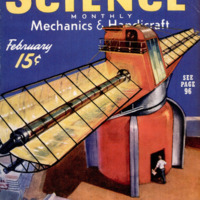 Popular Science Monthly, v. 136, n. 2, 1940
Popular Science Monthly, v. 136, n. 2, 1940
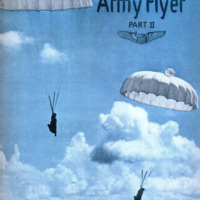 Ekran Resmi 2022-01-06 15.53.37.png
Ekran Resmi 2022-01-06 15.53.37.png Ekran Resmi 2022-01-06 15.53.47.png
Ekran Resmi 2022-01-06 15.53.47.png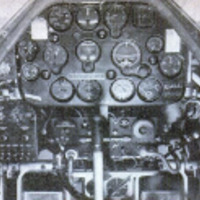 Ekran Resmi 2022-01-06 15.53.56.png
Ekran Resmi 2022-01-06 15.53.56.png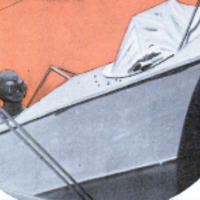 Ekran Resmi 2022-01-06 15.54.01.png
Ekran Resmi 2022-01-06 15.54.01.png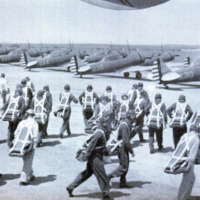 Ekran Resmi 2022-01-06 15.54.10.png
Ekran Resmi 2022-01-06 15.54.10.png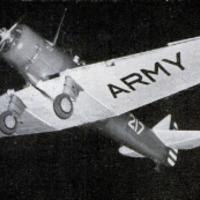 Ekran Resmi 2022-01-06 15.54.17.png
Ekran Resmi 2022-01-06 15.54.17.png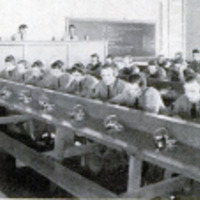 Ekran Resmi 2022-01-06 15.54.24.png
Ekran Resmi 2022-01-06 15.54.24.png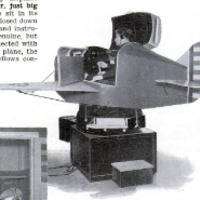 Ekran Resmi 2022-01-06 15.54.32.png
Ekran Resmi 2022-01-06 15.54.32.png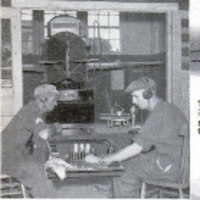 Ekran Resmi 2022-01-06 15.54.45.png
Ekran Resmi 2022-01-06 15.54.45.png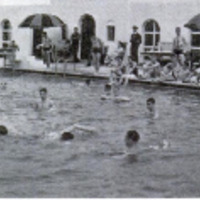 Ekran Resmi 2022-01-06 15.54.53.png
Ekran Resmi 2022-01-06 15.54.53.png

